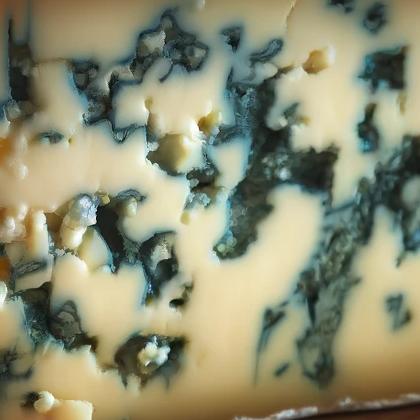Showing results for 'Cheese'
close
Cheese

Blue cheese is a general classification of cheeses that have had cultures of the mold Penicillium added so that the final product is spotted or veined throughout with blue, blue-grey, blue-green, or blue-brown mold and carries a distinct smell, either from that or various specially cultivated bacteria. Some blue cheeses are injected with spores before the curds form, and others have spores mixed in with the curds after they form. Blue cheeses are typically aged in a temperature-controlled environment such as a cave. Blue cheese can be eaten by itself or can be spread, crumbled or melted into or over foods.
Blue Cheese Pairs With:
Food Item
Flavor Affinity Level

Did you know there are 86 food flavor pairings in my database for Cheese available. What you are seeing above is a random list of 30 items which pair with Cheese.
For the entire list, beautifully formatted, enter your email address and click the download button below, then I'll email it to you as a PDF.
Blue Cheese Properties:
| Food Property | Type | Description |
|---|---|---|
| Flavor Profile | Salty | Blue cheese has a salty flavor due to the salt content in the cheese. |
| Umami | Blue cheese contains glutamate, which contributes to its savory umami flavor. | |
| Texture | Creaminess | Blue cheese has a creamy texture that becomes more pronounced as the cheese ripens. |
| Nutritional Value | Macronutrients | Blue cheese is rich in protein and fat, making it a high-calorie food. |
| Micronutrients | Blue cheese contains calcium, phosphorus, and other essential minerals. | |
| Color | Natural Pigments | Blue cheese has a white or pale yellow base color with blue-green mold veins running throughout. |
| Aroma | Volatile Compounds | Blue cheese has a strong and pungent aroma, attributed to compounds produced during the cheese-making process. |
| Chemical Composition | Acidity/Alkalinity (pH) | Blue cheese has a slightly acidic pH level due to the fermentation process. |
| Cooking Behavior | Heat Conductivity | Blue cheese melts easily when heated, making it suitable for use in cooked dishes. |
| Water Retention | Blue cheese retains some moisture when heated, adding to its creamy texture. |
Food Pairing App - Version 1.2.0
